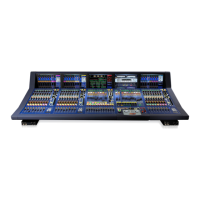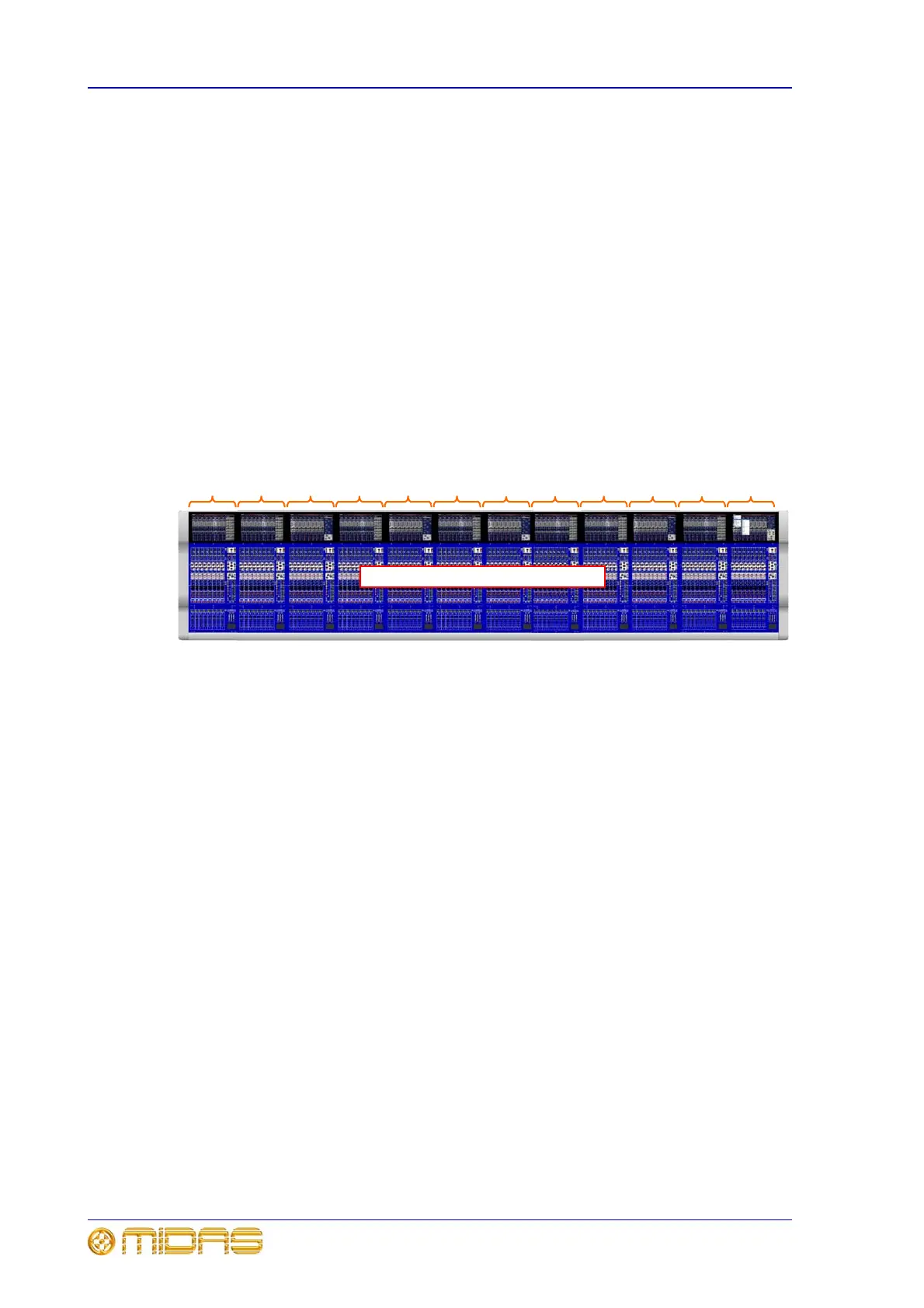168 Chapter 9: Basic Operation
XL8 Control Centre
Operator Manual
Navigating the inputs
The XL8 Control Centre has moved away from the traditional digital methods of layering
and paging, which are used to manipulate the channels too numerous to all fit on the
GUI simultaneously. Instead, it utilises operator-configurable grouping and colour
coding, see “VCA/POP groups” on page 179.
How input channels are displayed on the GUI
Each standard input GUI screen usually displays a bank of eight consecutively
numbered input channels (unless a group is selected to the control surface). There are
a total of 12 banks that, between them, encompass the 96 inputs available. Input
channels are displayed across the GUI in ascending order from left to right, irrespective
of bay position.
To help you understand the operating principles of the XL8 it may be best to visualise
the control surface as if it were an analogue one, that is, in two dimensions with all 96
input channels laid out side by side. In this case all input channels are visible all of the
time and would look something like the one in Figure 3 (a massive beast!).
Figure 3: Theoretical analogue equivalent of the XL8 Control Centre
However, in reality the XL8 Control Centre has only five GUI screens and, in the
standard configuration, only three of these GUI screens are allocated to the input
channels; the other two are used for the mix and output bay displays.
There are two main methods for selecting an input channel to a bay’s control surface,
scrolling and by typing in its number, which are detailed in the following sections.
1-8 9-16 17-24 25-32 33-40 41-48 49-56 57-64 65-72 73-80 81-88 89-96
Banks of channels
Theoretical analogue equivalent of the XL8

